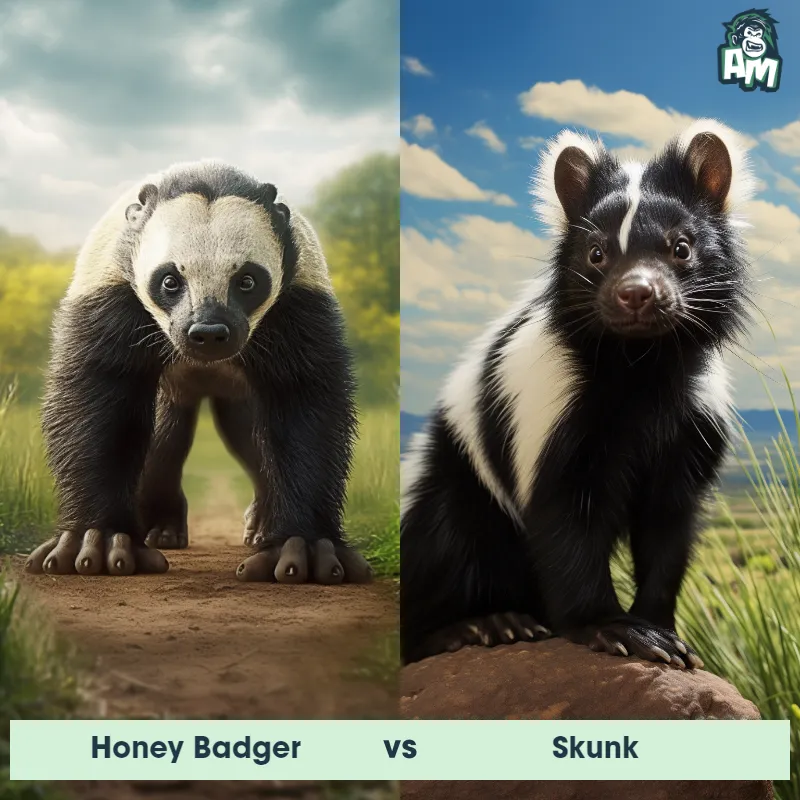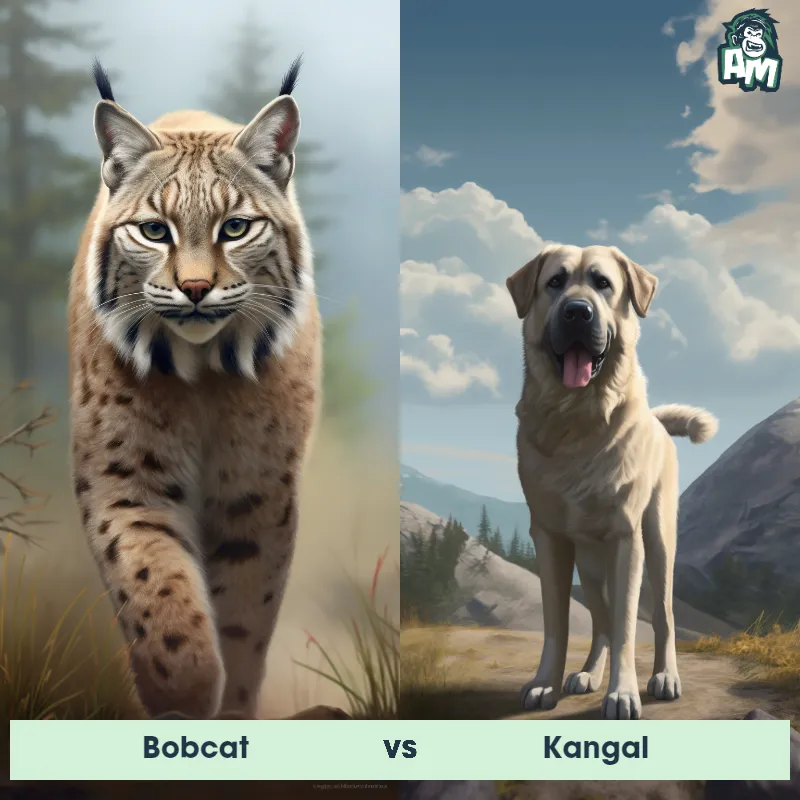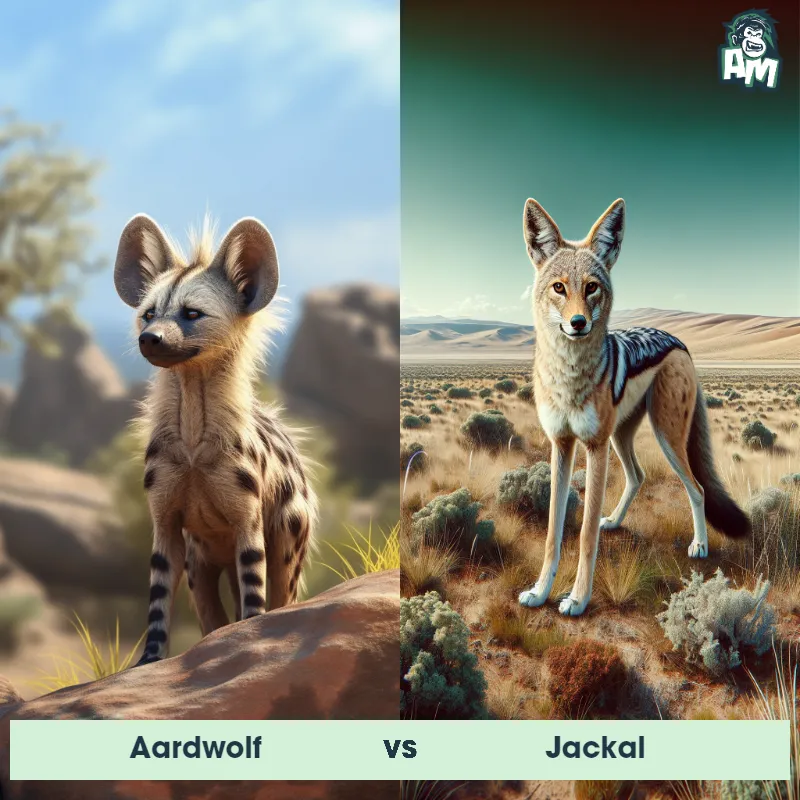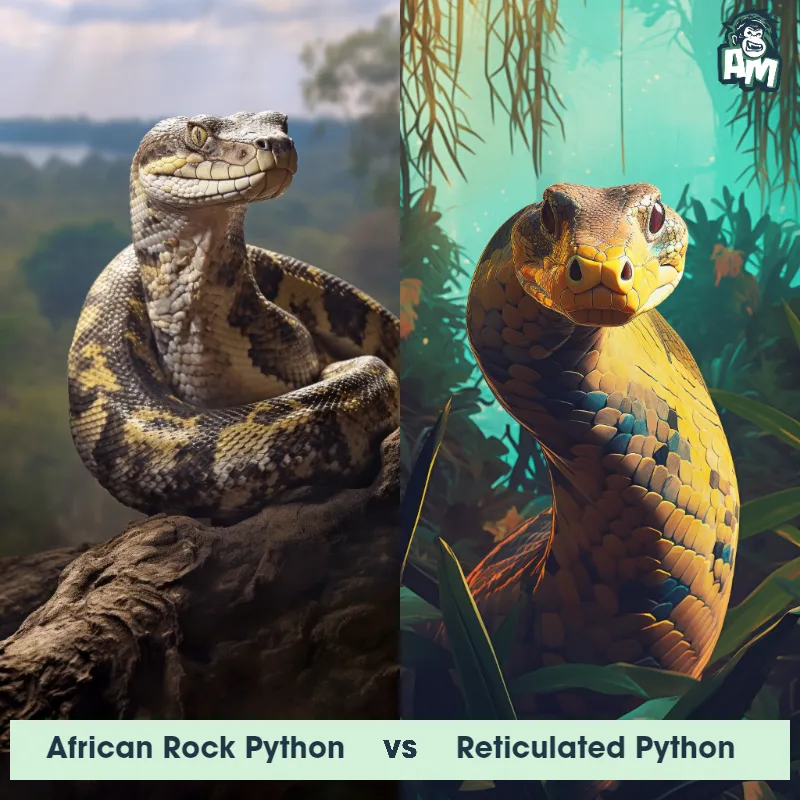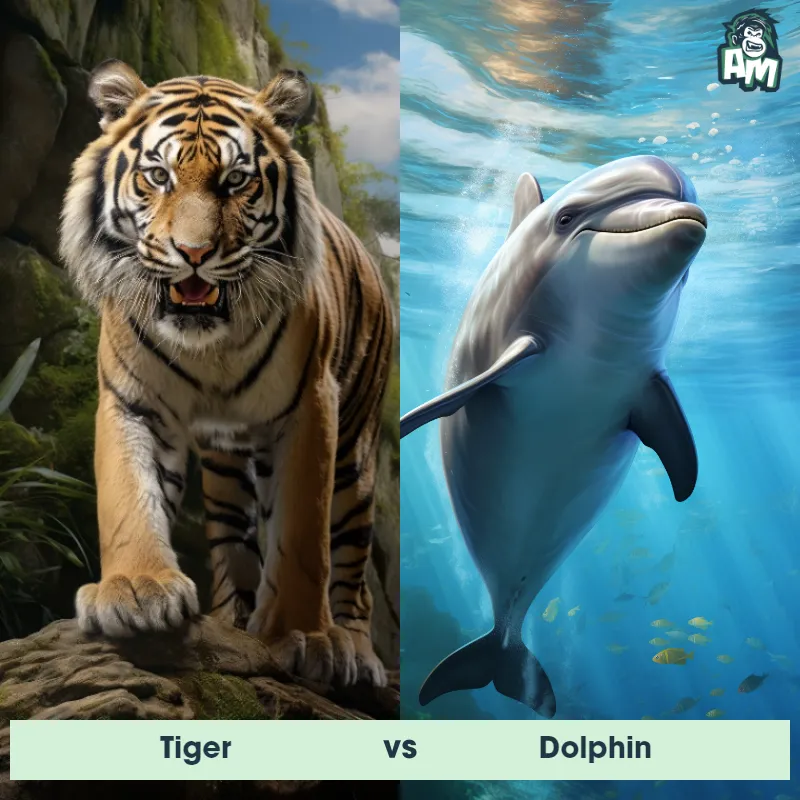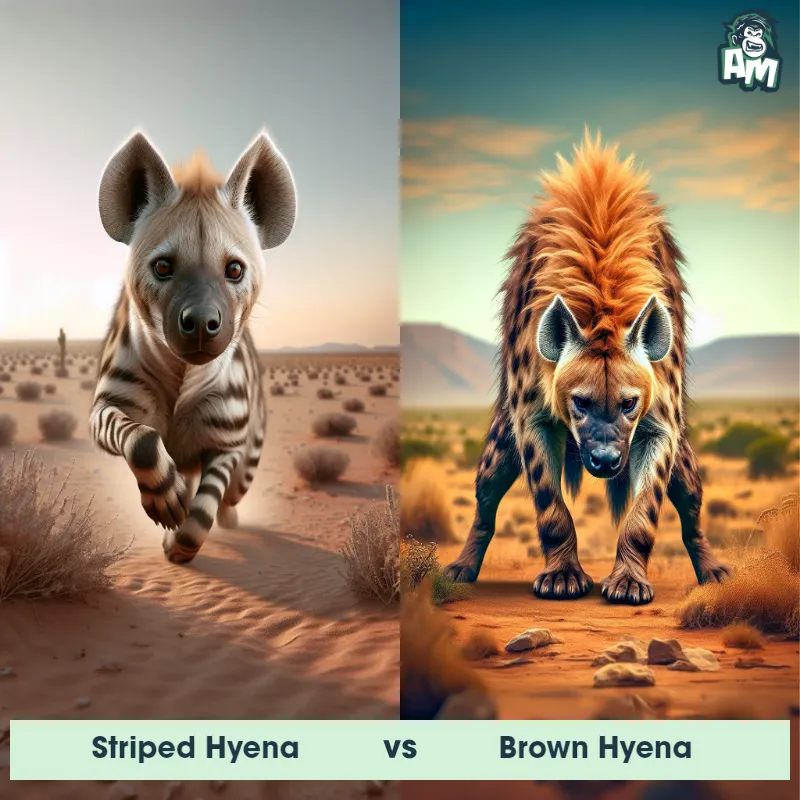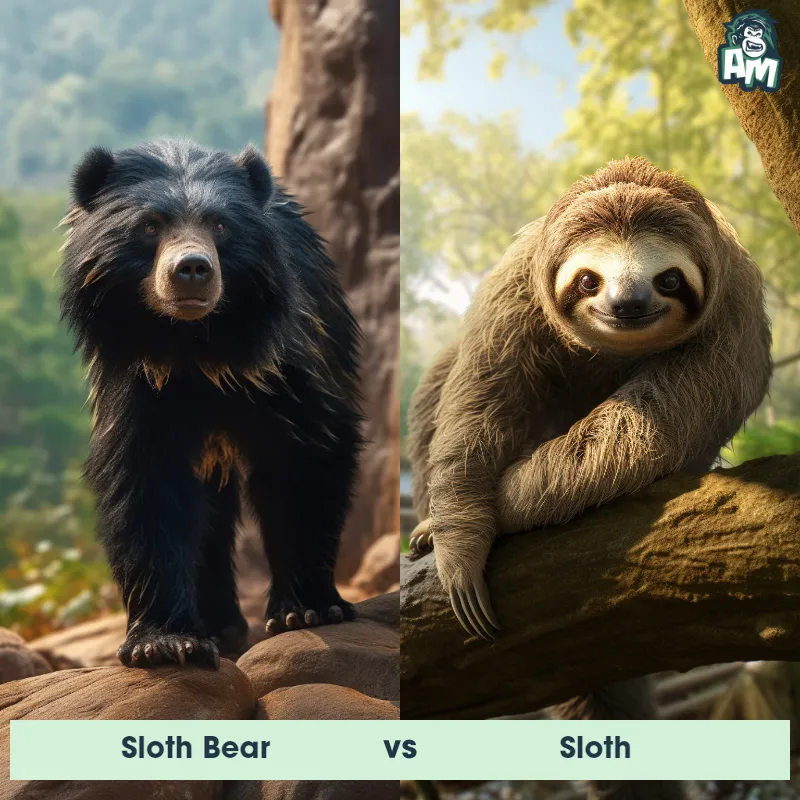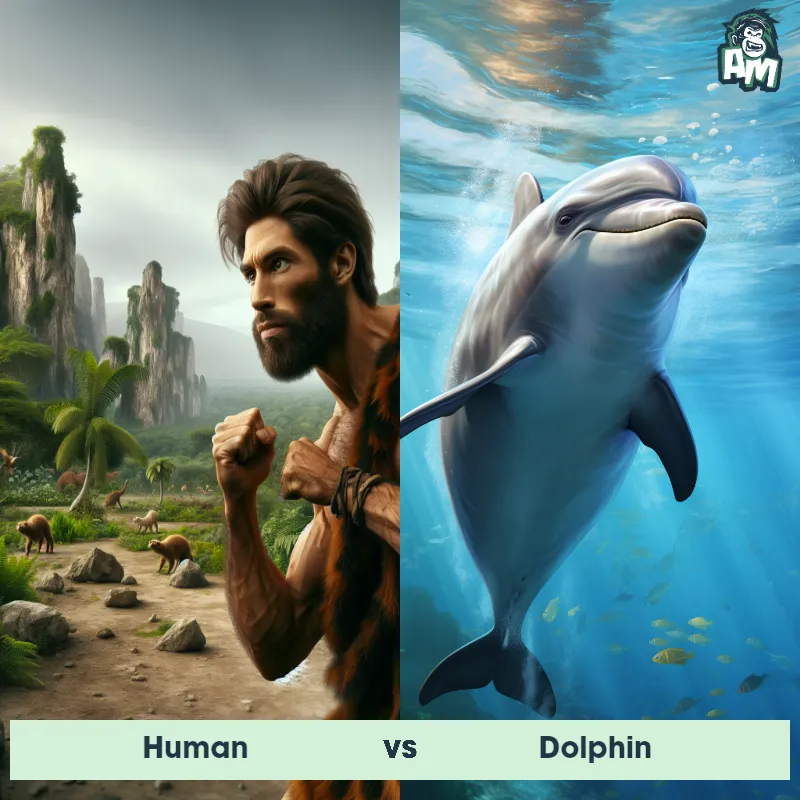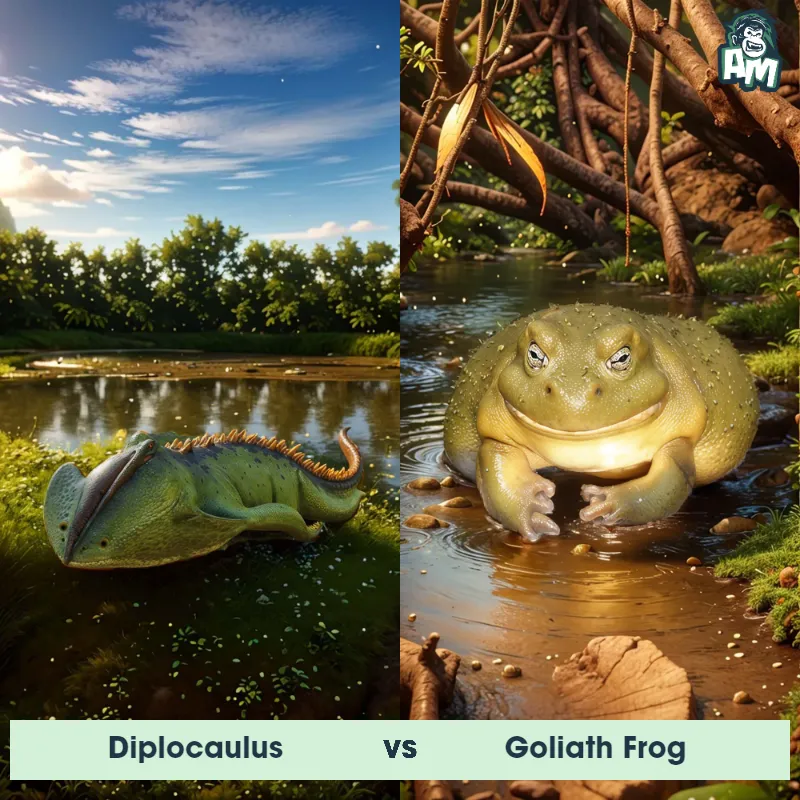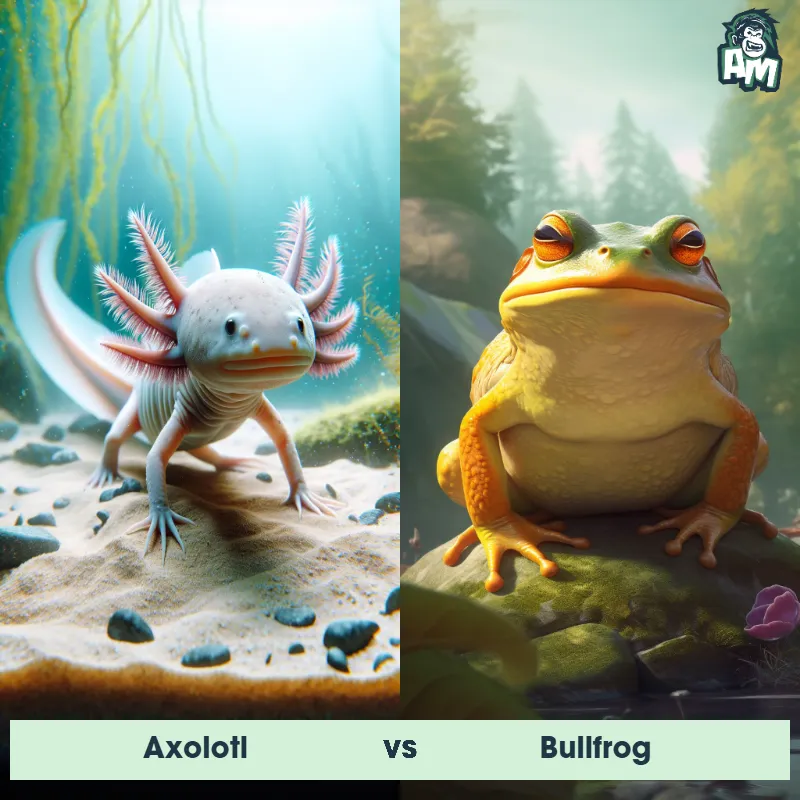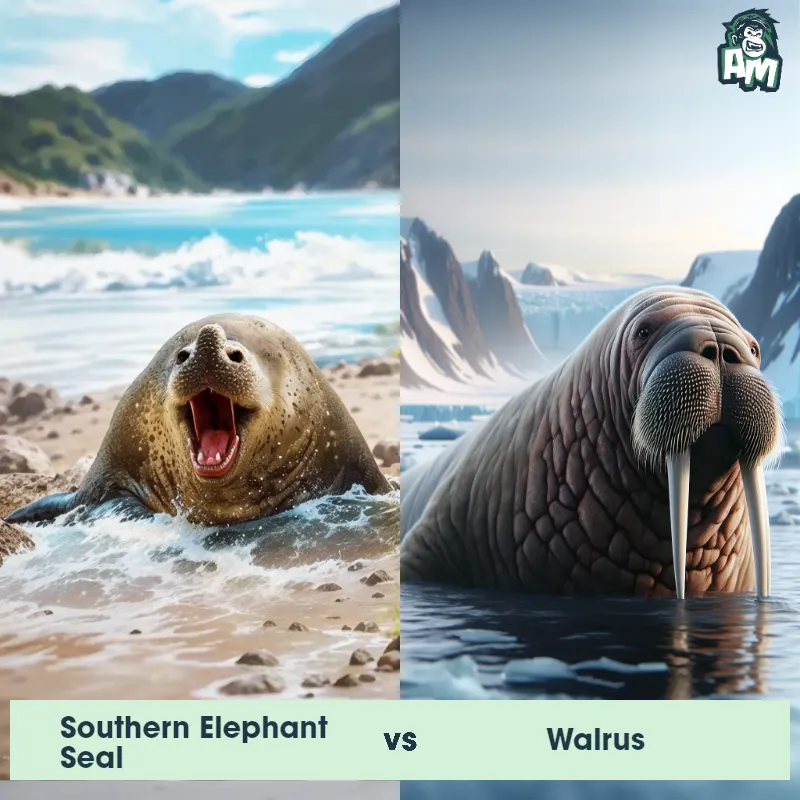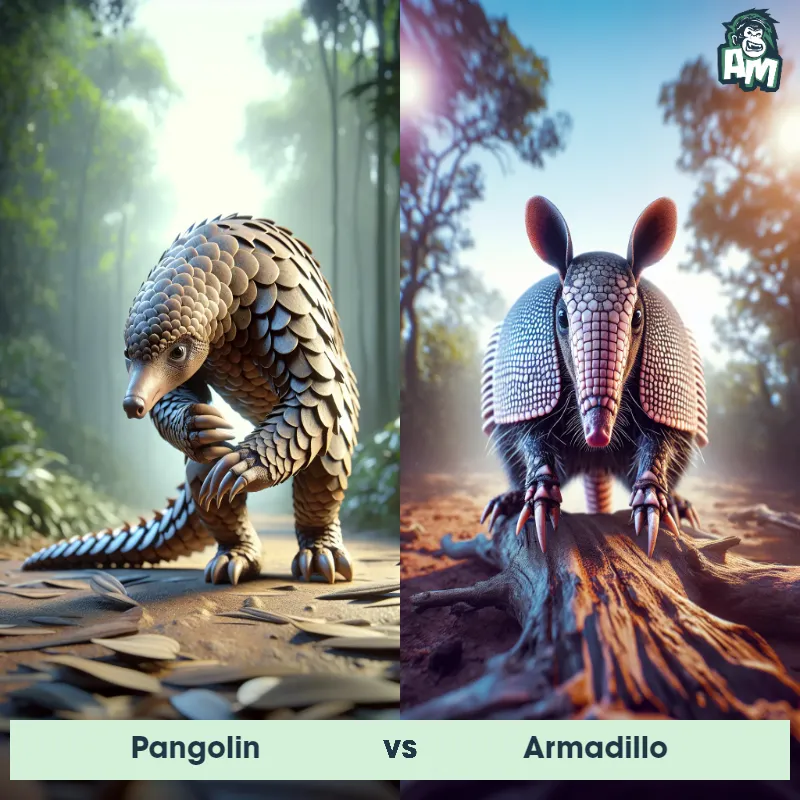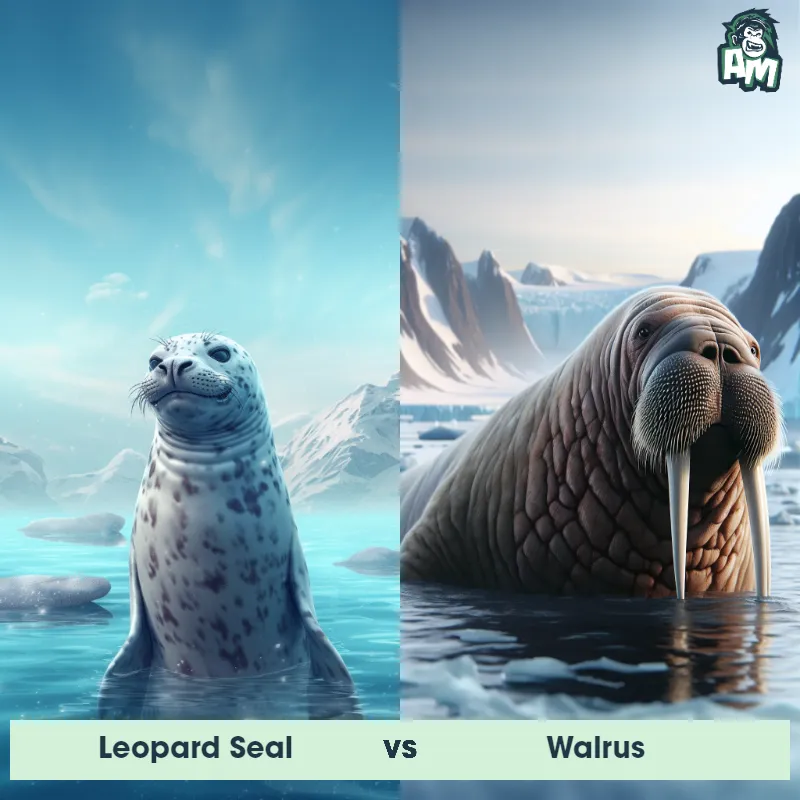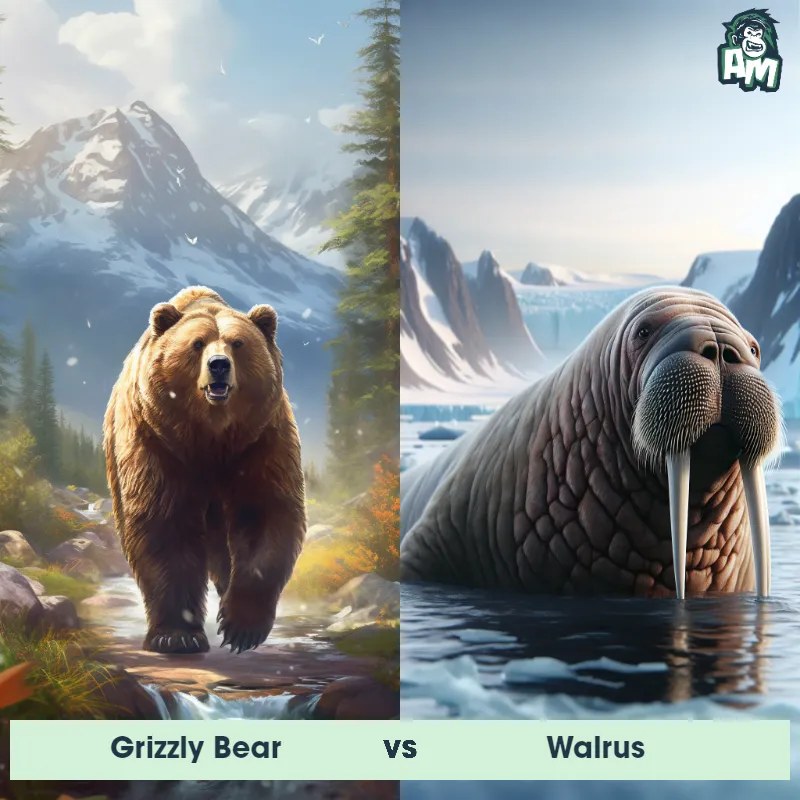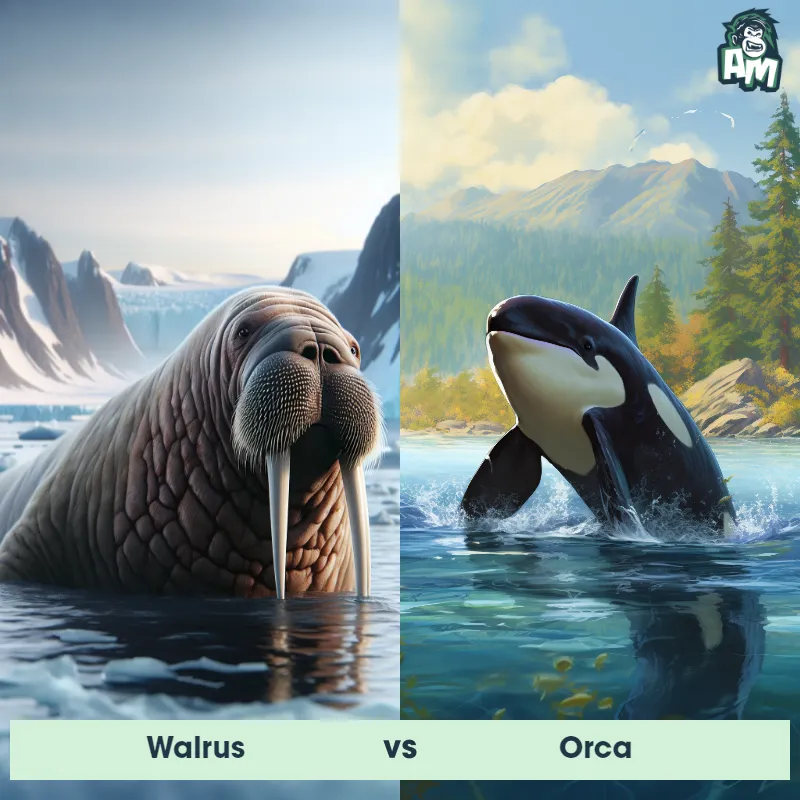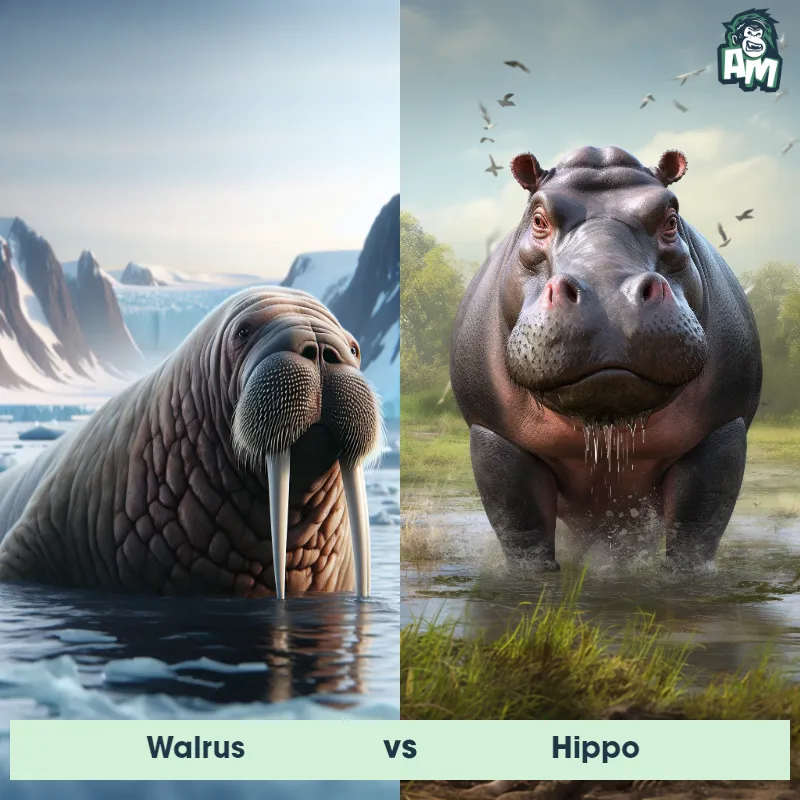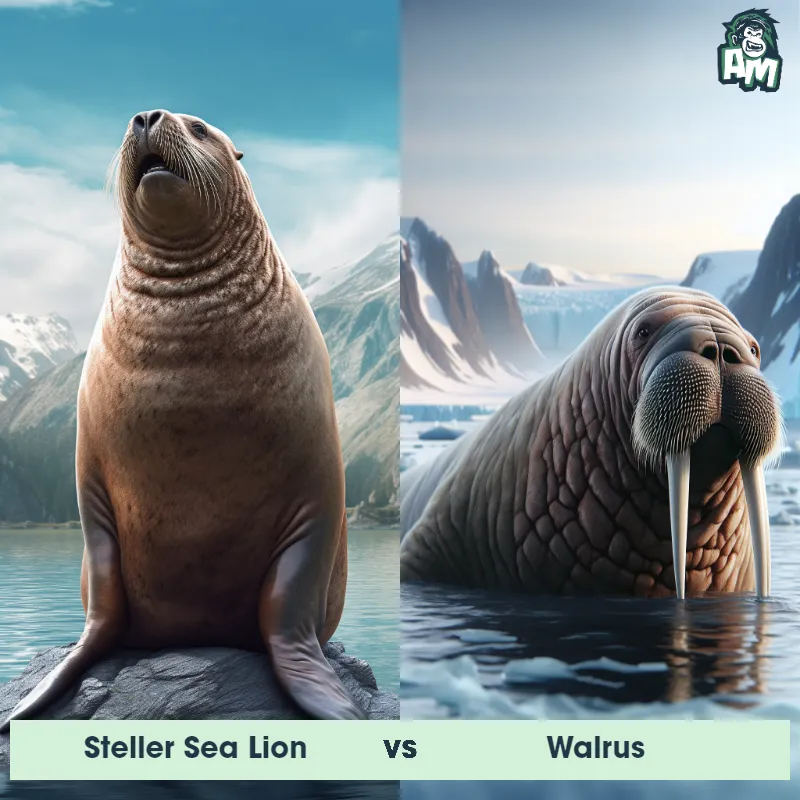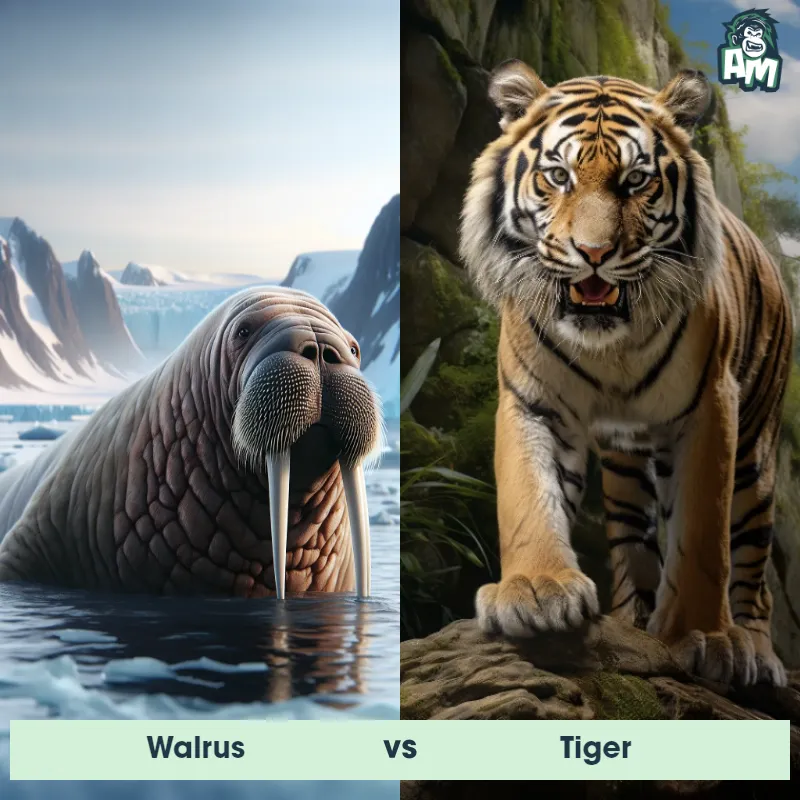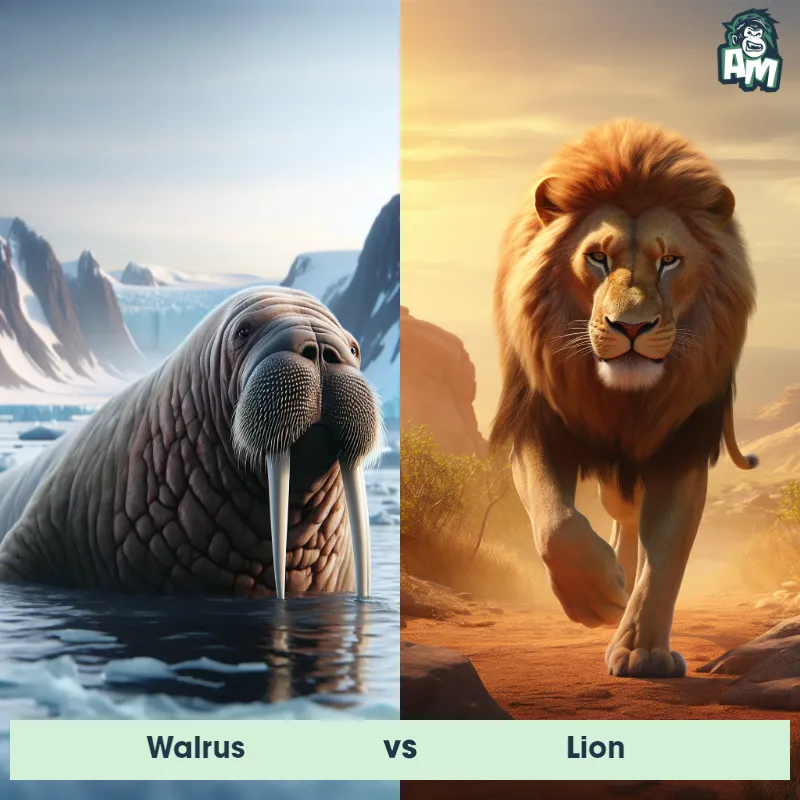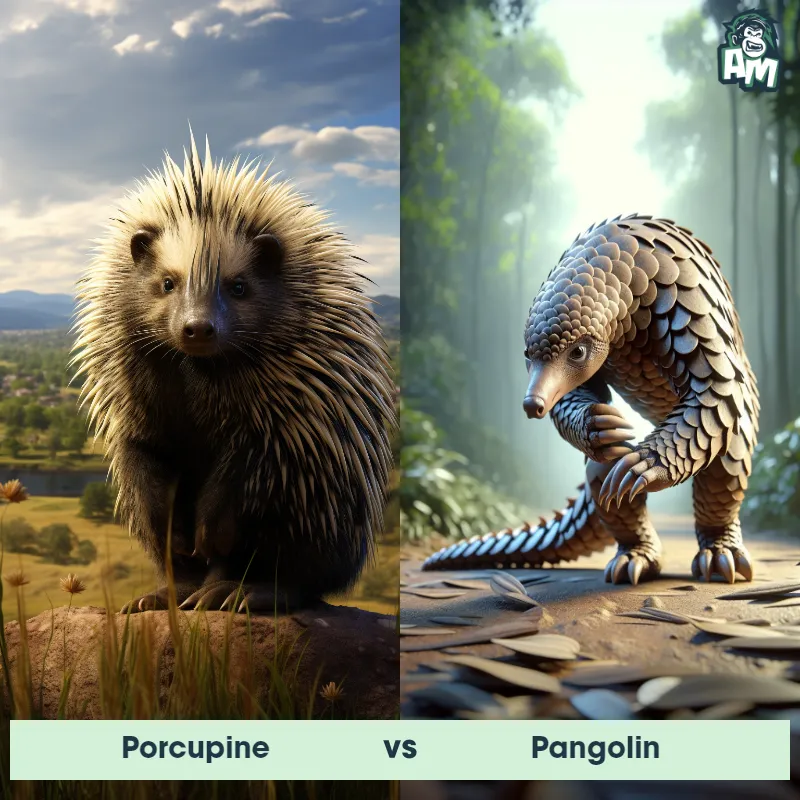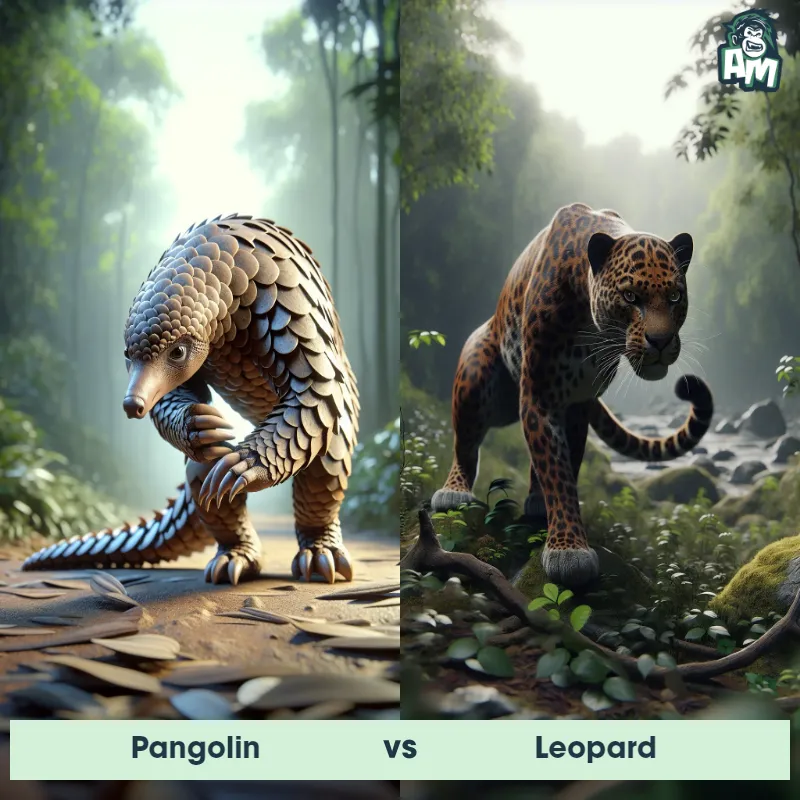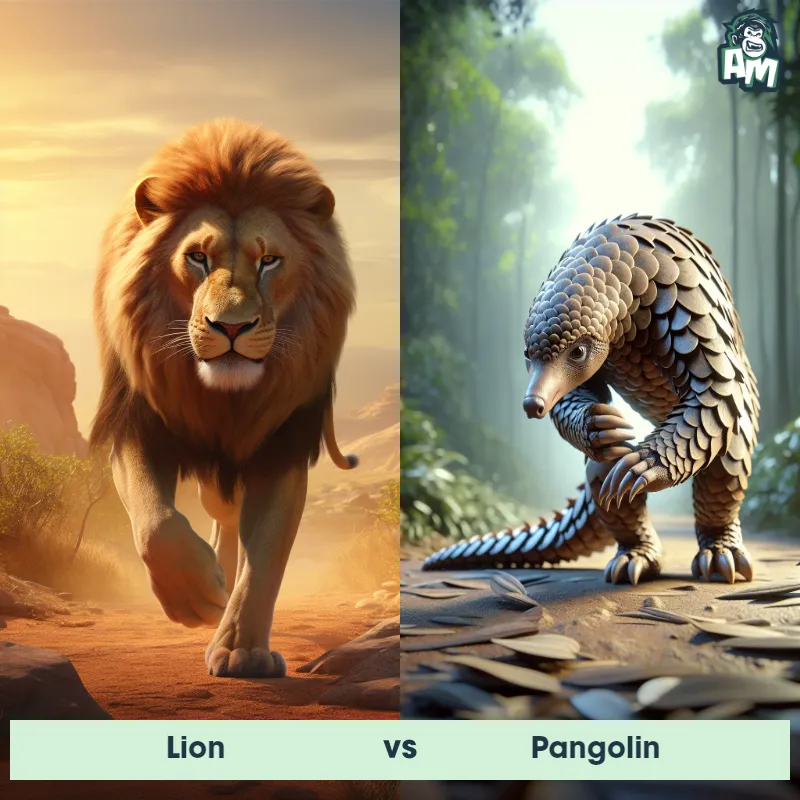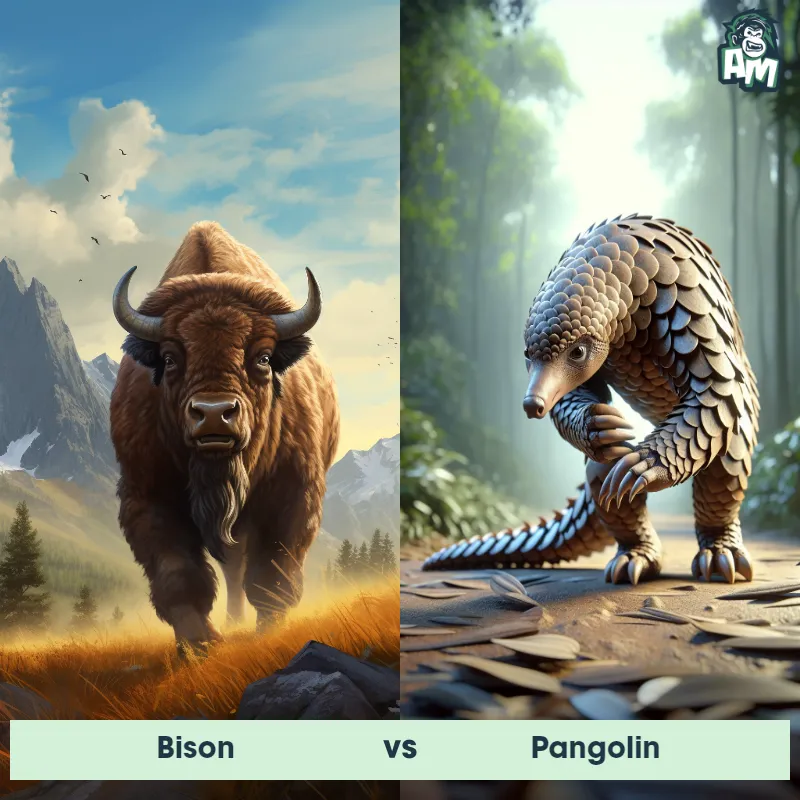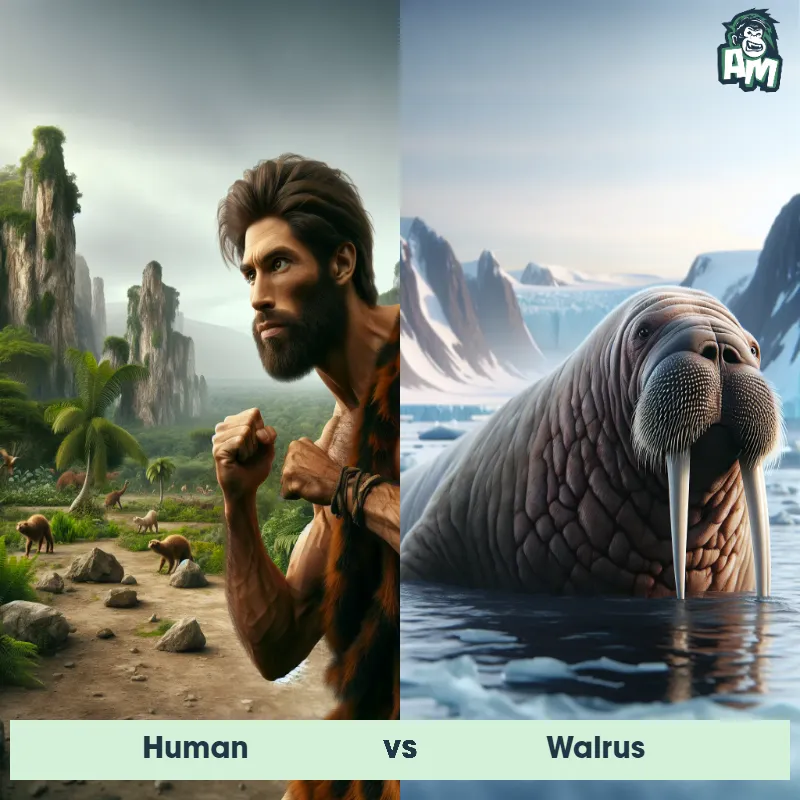Walrus vs PangolinSee Who Wins
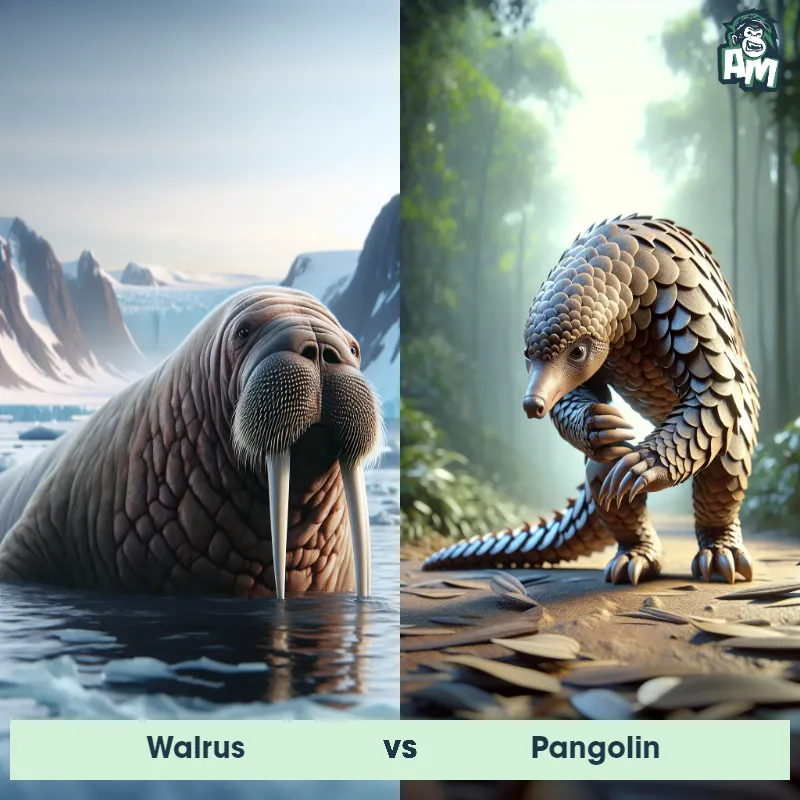
Welcome, ladies and gentlemen, to a thrilling matchup between a powerful Walrus and a nimble Pangolin! Both animals are ready to showcase their skills and fight for supremacy in the arena.
Contender 1: Walrus
The Walrus, also known as Odobenus rosmarus, is a large marine mammal that can be found in the Arctic Ocean and subarctic regions. They have a thick layer of blubber that helps them stay warm in cold waters, and their long tusks are used for defense, cutting through ice, and helping them climb onto ice floes. Walruses have a distinctive appearance with their wrinkled skin, whiskers, and flippers that are used for swimming and maneuvering on land.
Fun Fact: Walruses can hold their breath for up to 30 minutes while diving for food, which can include clams, mussels, and other shellfish.
Contender 2: Pangolin
The Pangolin, a unique mammal native to Africa and Asia, is known for its distinctive appearance and remarkable adaptations. With a body covered in overlapping scales made of keratin, it resembles a walking pinecone or an artichoke. The Pangolin possesses sharp claws for digging burrows and climbing, a long sticky tongue to extract ants and termites from their nests, and a prehensile tail for balance. These solitary animals are nocturnal and prefer tropical forests, savannas, and grasslands as their habitats. They have poor eyesight but rely on their keen sense of smell and hearing to navigate their surroundings.
Fun Fact: The Pangolin holds the remarkable distinction of being the world's only mammal with scales, making it one of nature's truly exceptional creatures!
Matchup Stats
| Walrus | Pangolin | |
|---|---|---|
| Size | Up to 11 feet (3.3 meters) in length | 1-3 feet (30-90 centimeters) |
| Weight | Up to 3,700 pounds (1,678 kilograms) | 4-35 pounds (1.8-16 kilograms) |
| Speed | Speed: 15 mph (24 km/hr) | 3mph (4.8km/h) |
| Key Strength | Tusks used for defense and dominance during mating season | Sharp claws for defense |
| Biggest Weakness | Slow movement on land | Slow movement |
Current Votes
Walrus vs Pangolin
See Who Wins
View More Matches
Looking For More?
Similar Matches
Scientific Stats
| Walrus | Pangolin | |
|---|---|---|
| Scientific Name | Odobenus rosmarus | Manis |
| Family | Odobenidae | Manidae |
| Habitat | Arctic Ocean and subarctic regions | Tropical forests, savannas, grasslands |
| Geography | Northern Hemisphere | Africa, Asia |
| Diet | Clams, mussels, and other shellfish | Ants, termites |
| Lifespan | 40 years - 50 years | 12 years - 15 years |
Key Differences between Walrus and Pangolin
- Size: The Walrus is much larger in size with an average length of 7.25-11.5 feet and can weigh up to 1.5 tons, while the Pangolin is significantly smaller, averaging 3.2-5.9 feet in length and weighing just 6-72 pounds.
- Behavior: Walruses are known for their gregarious nature, forming large herds on ice floes during breeding seasons, whereas Pangolins are solitary creatures, only coming together for mating purposes.
- Habitat: Walruses are found in cold Arctic waters, where they rely on ice floes for rest and haul outs, whereas Pangolins inhabit forests and grasslands of Asia and Africa, burrowing in the earth for shelter.
- Diet: Walruses are carnivorous, feeding primarily on benthic invertebrates like clams and snails, while Pangolins are insectivores, eating ants and termites with their long, sticky tongues.
- Shape: The Walrus has a distinct bulky body with flipper-like limbs and long tusks protruding from their mouths, while the Pangolin has a long, cylindrical body covered in scales and sharp claws for digging.
- Color: Walruses typically have a pinkish hue to their skin, covered in thick layers of blubber for insulation, while Pangolins are covered in scales ranging in color from brown to yellow, providing camouflage in their habitats.



